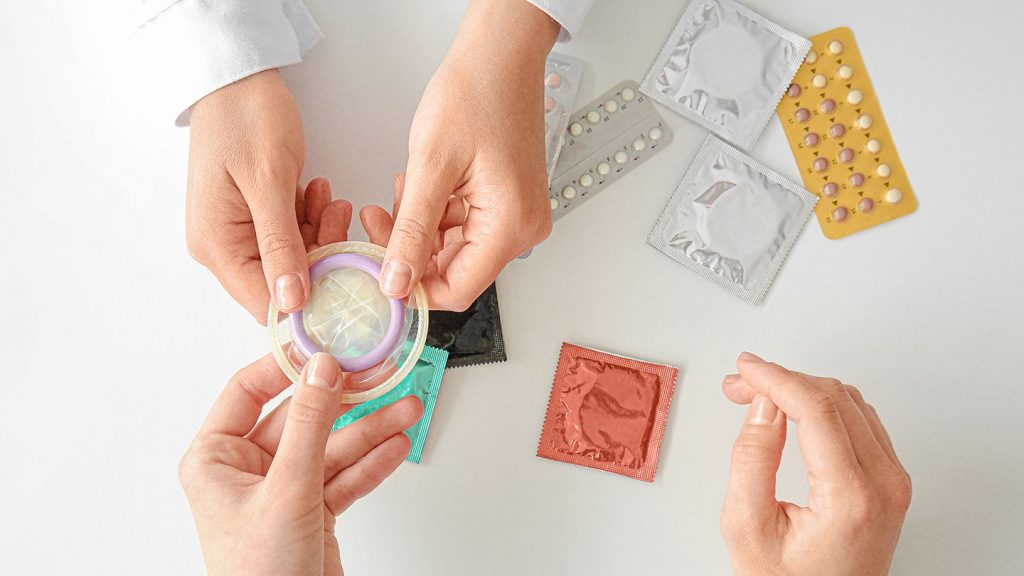Non-hormonal birth control methods refer to contraceptive options that do not rely on hormones to prevent pregnancy. These methods provide individuals with effective and reliable alternatives to hormonal contraception. They work by either creating a physical barrier, interfering with sperm movement, or altering the reproductive environment to prevent fertilization. Non-hormonal birth control methods offer a range of choices suitable for different preferences and needs. They can be particularly beneficial for individuals who prefer to avoid hormonal side effects, have medical conditions that contraindicate hormone use, or simply desire non-hormonal options.
In this blog we will explore some common non-hormonal birth control methods and their key characteristics. It is important to note that while these methods are effective when used correctly, no method provides 100% protection against pregnancy or sexually transmitted infections (STIs). Therefore, it is advisable to consult with a healthcare provider to determine the most appropriate non-hormonal birth control method for your individual circumstances.
Things To Keep In Mind While Opting for Birth Control
Not everyone should use the same birth control technique. There are advantages and disadvantages to every form of birth control.
When selecting a birth control technique, keep the following in mind:
- Do you intend to have kids in the future? By when?
- Do you suffer from any medical conditions?
- When was the last time you had sex?
- Who are your current sexual partners?
- Do you also require defense against HIV and other STDs?
- What effect does the birth control technique have?
- Exist any negative effects?
- Can you use it consistently and correctly?
You posses a variety of alternatives whilst it pertains to taking contraception to avoid getting pregnant. Birth control methods fall into two distinct groups: hormonal and non-hormonal methods.
Estrogen, progesterone, or both hormones are contained in a variety of hormonal contraception treatments, such as tablets, implants, injections, patches, and rings. They do this by stopping ovulation, thereby rendering it more difficult for sperm to access the eggs, and changing the uterine lining so that a fertilized egg cannot implant therein.
What Is A Contraceptive Patch?
The birth control patch is a small, adhesive, beige patch that is 134 inches (412 centimeters) square. In order to prevent pregnancy, hormones are released via the skin and into the circulation. Chemical compounds called hormones regulate how your body’s organs work.
What Is The Process Of Applying The Birth Control Patch?
Ovulation, or the expulsion of an egg through the ovaries throughout the monthly menstrual cycle, is prevented by the progesterone and estrogen included in the patch. A female cannot become pregnant if an egg remains incubated since there is virtually nothing for sperm to fertilize.
Contrarily, techniques that do not use hormones are referred to as non-hormonal birth control and include a variety of various sorts of procedures.
Various non-hormonal contraception methods include:
Barrier Techniques:
These techniques include creating a barrier around the egg and sperm to prevent them from coming into contact The most popular kinds are condoms, which come in both internal and external varieties and are placed into the vagina and worn on the penis, respectively. Spermicides are another option, and they come in various forms of pills, gels, creams, foams, and more. In addition to spermicide, alternatives comprise cervical caps, which are silicone cups intended to be put into the vagina, and diaphragms.
Intrauterine Devices (IUDs)
IUDs are made of copper This procedure entails placing a copper-containing device within the uterus. To avoid conception, the gadget distributes trace quantities of copper into the womb on a daily basis. This method can be used to avoid getting pregnant up to five days after having unprotected sex. It is additionally a viable emergency contraceptive.
Natural Approaches:
Natural approaches can take a variety of shapes. The cessation procedure, which entails withdrawing out of the vagina before ejaculation, is chosen by some people. Several choose the fertility monitoring approach, which entails monitoring your monthly cycle and refraining from sexual activity during fertile times.
Sterilization
Sterilization entails having a treatment to completely eliminate the potential of becoming pregnant. Unless you have an additional procedure to undo it, sterilization is irreversible. The surgery, referred to as a vasectomy in males with penises, prevents sperm from being expelled along with semen. The procedure, known as tubal ligation in those who have a vagina, prevents the potential for fertilization by stopping eggs from accessing the uterus.
Those who don’t want to use hormonal birth control due to the possible negative consequences might opt for non-hormonal methods of contraception. Some people may need to utilise non-hormonal birth control in addition to hormonal birth control if they have specific medical issues that prohibit them from using hormonal contraception.
There is no clear link between the copper IUD’s absence of hormones and weight gain. However, ongoing research has shown that copper IUD users continue to put on weight, just as people who don’t take any kind of contraception would as they get older. According to one study, permanent copper IUD wearers acquired weight consistently throughout the course of seven years, averaging 4.0 kg. In research examining the relationship between weight gain and numerous hormonal contraception techniques, copper IUD users are frequently used as the reference group.
Therefore, regardless of how it could look that a person taking hormonal birth control has put on weight at the conclusion of the research, their weight gain might not be significantly distinct from the amount of weight they might have acquired if they had employed a non-hormonal technique.
Advantages and Disadvantages of Non-Hormonal Birth Control Techniques
The advantages and disadvantages of non-hormonal birth control techniques are listed below.
You are not susceptible to any of the unpleasant hormonal adverse reactions linked to hormonal birth control, which is the fundamental benefit of non-hormonal methods of contraception.
There is no clear link between the copper IUD’s absence of hormones and weight gain. However, long-term studies show that copper IUD users continue to gain weight, just as people who don’t use any kind of contraception would do when they become older and stop taking their contraceptives. According to one study, permanent copper IUD wearers acquired weight consistently throughout the course of seven years, averaging 4.0 kg. Studies examining weight gain with various hormonal birth control techniques frequently use copper IUD users as the comparator group.
Among the possible adverse consequences of hormonal contraception are:
- Constipation
- abnormal bleeding
- gaining weight
- Painful headaches
- Skin inflammation
- Emotional shifts
- Breast sensitivity
- Reduced sexual desire
For those with the problems listed below, who may not be able to use hormonal birth control, non-hormonal birth control is also secure:
- excessive blood pressure
- increased risk of blood clots or stroke
- past breast cancer history
- liver illness
- Smoking
- being above the age of 35
Hormonal birth control is a similarly possible alternative for you if you do not suffer from any of these issues because it is not intrinsically harmful. You might additionally want to consider the available low-dose and ultra-low-dose hormonal birth control options power source and ultra-low-dose hormonal birth control options that are accessible.
It should be noted that hormonal birth control fails to provide STI protection. Condoms and other barrier measures can help minimize STIs, but sexual activity restriction is the only proven technique of prevention.
Resources:
https://pubmed.ncbi.nlm.nih.gov/18326359/
https://www.ncbi.nlm.nih.gov/pmc/articles/PMC6485821/













